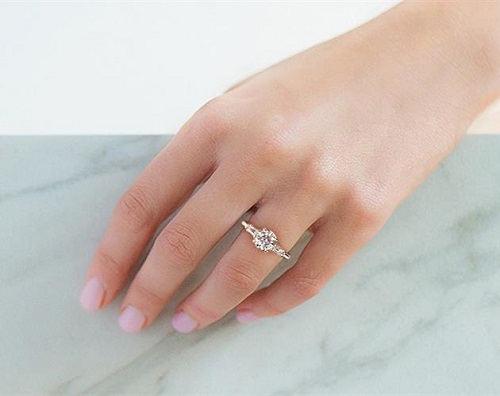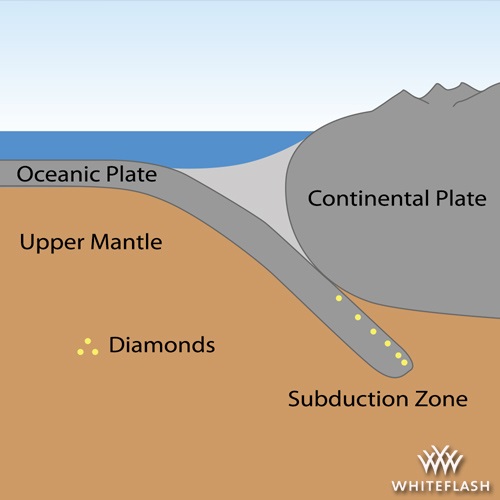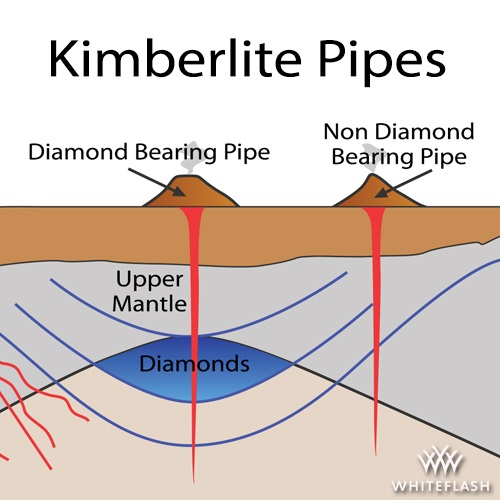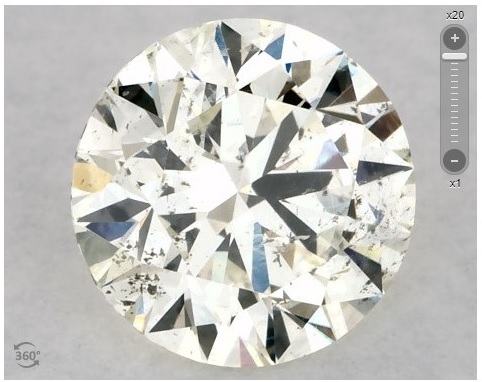
The Best Place to Buy Loose Diamonds Online
June 22, 2020
The Best Designer Jewelry and Engagement Ring Brands
June 24, 2020Are Diamonds Rare?

For those who love diamonds, there are several key features that makes them desirable; their inherent durability, the divine sparkle and their intrinsic links to romance, glamour and eternity are the foundations of diamond popularity.
The story of the DeBeers marketing campaign that sparked the desire for a diamond engagement ring is now widely known – but does the appeal of diamonds rest upon a shady bedrock of smart advertising? Are diamonds truly rare?
How are Diamonds Made?

Image Courtesy Whiteflash
Understanding how natural diamonds are formed is a step towards appreciating what makes diamonds so special. Diamonds are made from carbon – this might not sound that special, but they are the only gemstones that are comprised of a single element. Carbon itself occurs with regularity in nature and is a common mineral, however to transform into a diamond, carbon must be subjected to incredibly high temperatures and pressures within the mantle of the earth. The carbon atom form short, strong bonds and the result is a material with exceptional hardness (diamonds score a 10 on the Mohs Scale).
Natural diamonds take billions of years to form. Their time spent within the earth and extraordinary conditions which are necessary for their formation is only the first chapter in the journey of diamond jewelry.
How are Diamonds Mined?
Diamond mining is a challenging and expensive process. The toughest terrains in the world must be faced with costly, industrial equipment and immense man power. At the end of this journey, many of the diamonds recovered from the earth will not be of jewelry quality. The recovery of diamonds is one of the reasons diamonds are expensive.

Image Courtesy Whiteflash
The Diamond Market
Chat with a group of friends and you will almost certainly hear someone announce that diamonds only hold value because DeBeers withhold diamonds from the open market to drive prices. They are half right.
It is true that DeBeers once had a total monopoly on the diamond market, storing thousands of uncut diamonds in warehouses in London, and only releasing small amounts to meet minimum demand. Naturally, this sent the prices of diamonds sky rocketing and enforced the belief that diamonds are rare. DeBeers lost their monopoly after being refused trade by countries such as the US and DeBeers stopped stockpiling diamonds over 20 years ago. DeBeers continue to own and sell some of the rarest diamonds in the world, such as the Oppenheimer Blue diamond sold in 2016.
The quantity of diamonds that DeBeers possess is a reflection on their previous power over the diamond mining industry, and the investment that the powerhouse company were able to put into mining structures.
Diamonds are an emotional purchase; prices are dictated by quality but driven by emotions and desires. A round brilliant is an expensive cut because much of the rough is lost during the cutting process but also because it is so heavily desired for diamond engagement rings.
What Makes a Diamond Rare?
The journey of a diamond from earth to engagement ring can shed light on their value, but does it make them rare? There are millions of diamonds on the open market, and while once reserved for royalty, individuals from all walks of life now want a diamond to call their own.
High quality diamonds are very rare. Inclusions, damage, color presence and poor cuts all de-value a diamond and are common pitfalls that affected a huge percentage of natural diamonds on the market. A high-quality diamond is a marriage of one of mother nature’s greatest triumphs and the exquisite craftsmanship of man.

Image Courtesy James Allen – 0.55ct M-SI2 Round Brilliant with visible inclusions
Advertising has played a crucial role throughout the history of diamonds, but while it is true that DeBeers cemented the gift of a diamond engagement ring firmly within culture, the most reputable modern vendors forgo the power of advertising in favor of beautiful diamonds with performance reports to back them up.
Are Diamonds Really Worth Anything?
Whether it’s fine art, a vintage champagne or a 1963 Ferrari, there will always be those who cannot understand the price tag that luxury items demand. The value of a diamond is layered; a complex balance of history, beauty, quality and rarity.
While the high-street may be filled with low quality gems, finding a sparklingly clear, icy white diamond of jewelry quality is still rare. Even with advances in technology and materials, the mining and cutting processes are laborious and do not always yield the standard of diamond that I would recommend to buyers.


